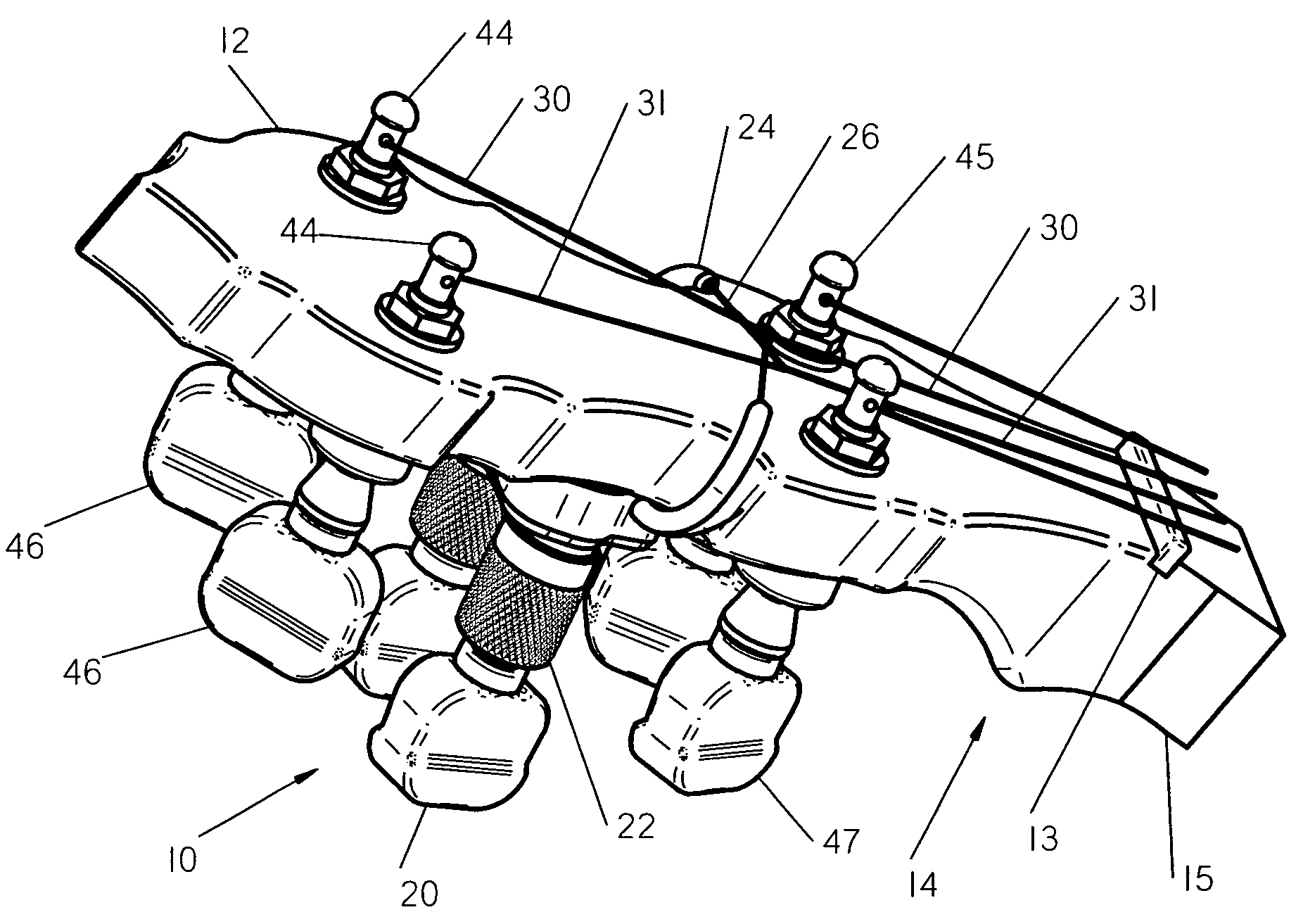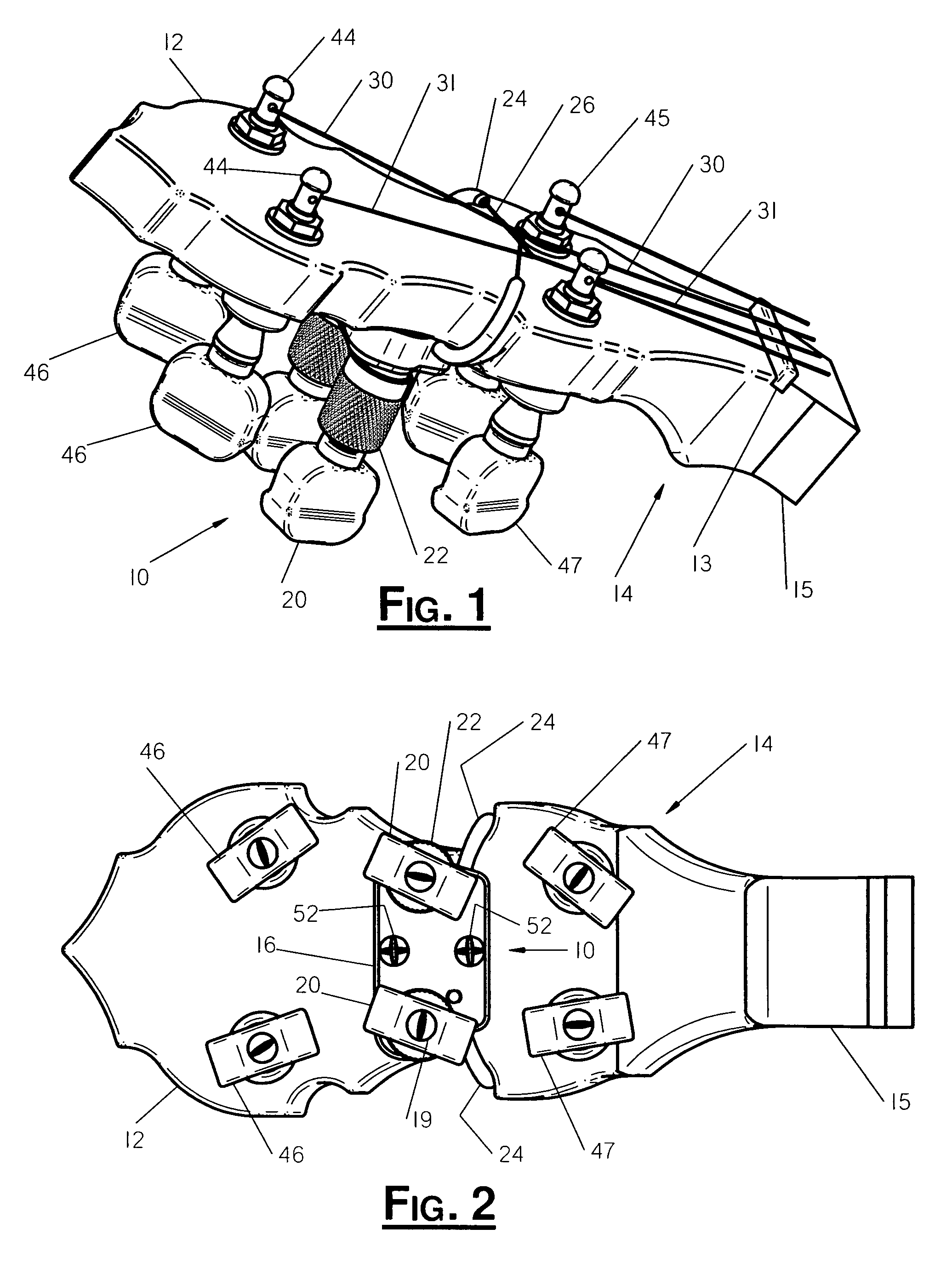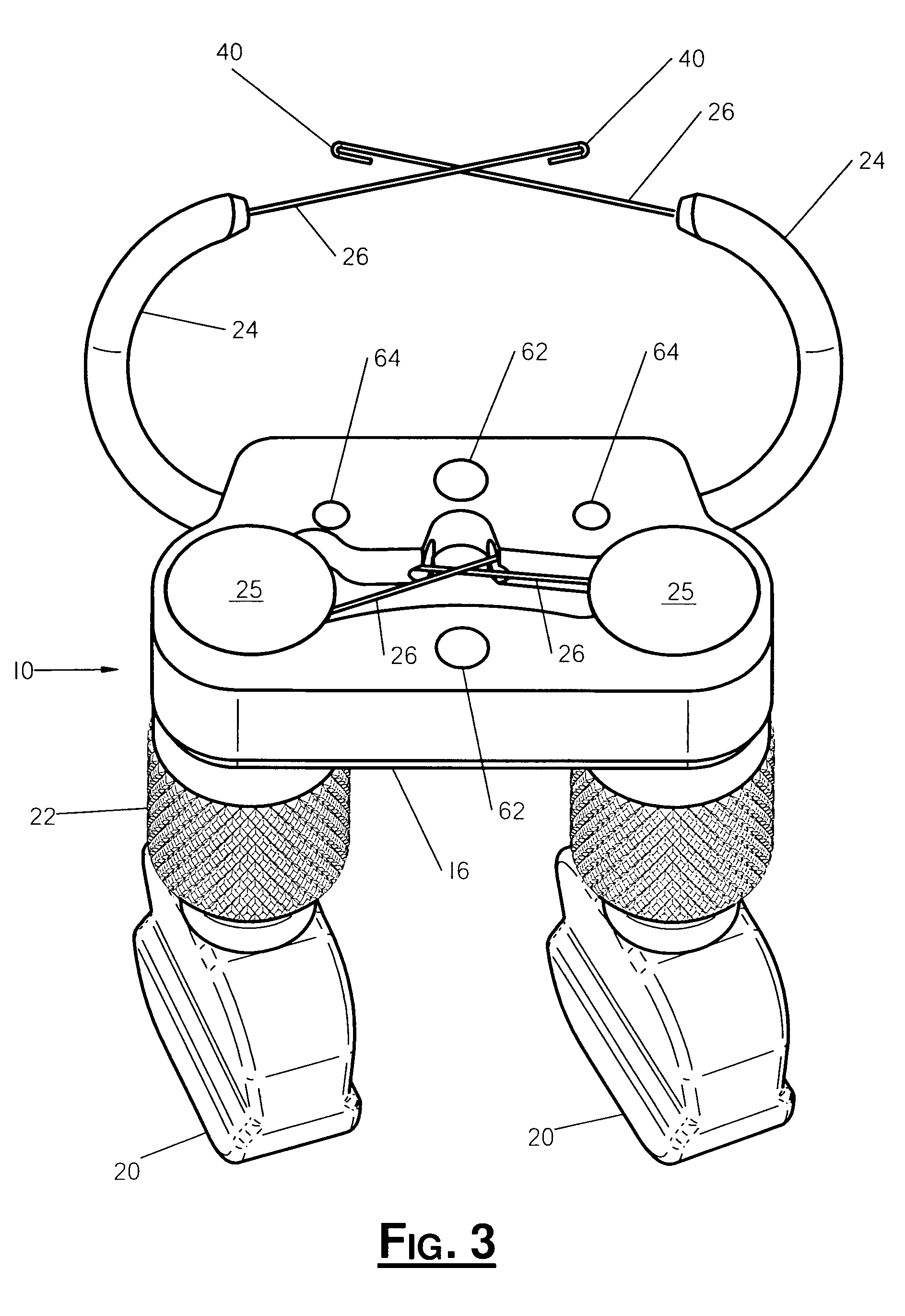D-tuner for banjo
a dtuner and banjo technology, applied in the field of dtuner for banjo, can solve the problems of high production cost, high production cost, and high custom-made device cost, and achieve the effects of convenient mounting on the banjo, quick, easy and accurate tuning, and economic manufacturing
- Summary
- Abstract
- Description
- Claims
- Application Information
AI Technical Summary
Benefits of technology
Problems solved by technology
Method used
Image
Examples
Embodiment Construction
[0030]The particulars shown and described herein are by way of example and for purposes of illustrative discussion of the embodiments of the present invention only and are presented to provide what is believed to be the most useful and readily understood description of the principles and conceptual aspects of the present invention. No attempt is made to show structural details of the present invention in more detail than is necessary for a fundamental understanding of the present invention. The description, taken with the drawings, makes apparent to those skilled in the art how the forms of the present invention may be embodied in practice.
[0031]Referring to the drawings, FIG. 3 shows a preferred embodiment of a D-Tuner 10 of this invention prior to mounting it on a banjo, and FIGS. 1 and 2 show the D-Tuner mounted on a peghead 12 of a banjo 14, only neck 15 and peghead of which are shown. The banjo 14 is a typical banjo with neck 15 having four tuning pegs 44, 45 with tuning button...
PUM
 Login to View More
Login to View More Abstract
Description
Claims
Application Information
 Login to View More
Login to View More - R&D
- Intellectual Property
- Life Sciences
- Materials
- Tech Scout
- Unparalleled Data Quality
- Higher Quality Content
- 60% Fewer Hallucinations
Browse by: Latest US Patents, China's latest patents, Technical Efficacy Thesaurus, Application Domain, Technology Topic, Popular Technical Reports.
© 2025 PatSnap. All rights reserved.Legal|Privacy policy|Modern Slavery Act Transparency Statement|Sitemap|About US| Contact US: help@patsnap.com



